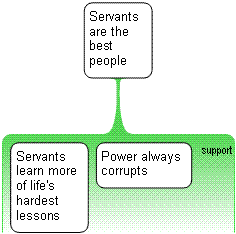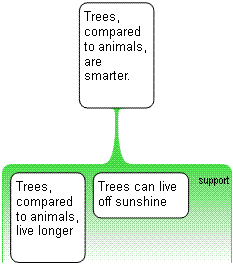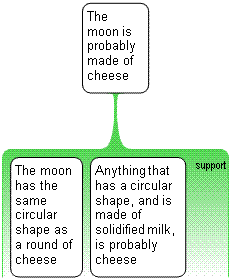The Science Of Scientific Writing Set 9 Set 9-Analysis maps • Second page • Example • Exercise 1 • Exercise 2 • Exercise 3 • Exercise 4 • Exercise 5 • Refinement Revisited • Rabbit Rule • Holding Hands Rule • Exercise 6 • Inference objections • Exercise 7 • Exercise 8 • Final.
OVERVIEW: The way to well-written science
PART I: Paragraphs and Sentences
SET A: Paragraphs: The Maps Behind Them
SET B: Paragraphs: Using Maps to Meet Readers' Expectations
SET C: Paragraph Coherence and Cohesion
SET D: Sentences
SET E: Scientific Sections (including Methods)
SET F: Scientific Sections: The Discussion
SET G : Scientific Sections: The Introduction
SET H : The Paper as a Whole
Exercise 6
Block 1
Each of the four arguments below does not conform to one or more of the following rules:
- The Binary Rule
- The Rabbit (or Reverse Rabbit) Rule
- The Holding Hands Rule
Drag each map to the workspace, and rework it such that:
- it meets all the requirements of all the rules
- it has (at least) the generic three-part structure (claim +[reason +assumption])
- any
additional reason that doesn't fit into the three-part structure is added
in as a separate reason.
Check your answers against the model answers.
- Compose your own argument map, of sufficient complexity to generate a paragraph of at least 6-8 sentences.
- For every reason or objection there should be an accompanying ASSUMPTION.
- Each three-part
set (Claim + {reason + assumption}) must meet the requirements of:
- The Binary Rule
- The Rabbit (or Reverse Rabbit) Rule
- The Holding Hands Rule
- Once the map is complete, write it up as a position-final paragraph
Content of this page drawn in whole or part from the Austhink Rationale Exercises with permission from Austhink.



